Rotisserie chicken is a true kitchen hero, offering unbeatable convenience and versatility. Whether you’re short on time or looking to stretch your grocery budget, leftover rotisserie chicken can be repurposed into countless quick and easy meals. From hearty soups to fresh salads and satisfying casseroles, the possibilities are endless. These « leftover rotisserie chicken recipes » are perfect for turning yesterday’s dinner into today’s delicious dish, saving you both time and money. Ready to make the most out of your leftovers? Let’s dive into some creative and flavorful ideas!
Table of Contents
- Why Rotisserie Chicken is a Busy Cook’s Best Friend
- Easy Dinners with Leftover Rotisserie Chicken
- Nutrition Information
- Frequently Asked Questions
- Other chicken recipes
Why Rotisserie Chicken is a Busy Cook’s Best Friend
For busy cooks, finding ways to save time in the kitchen without compromising flavor or nutrition is key. Enter the rotisserie chicken—a true lifesaver for those juggling a packed schedule while wanting to serve satisfying meals. Here’s why rotisserie chicken has earned its place as the ultimate kitchen hack for busy individuals and families.

The Convenience of Store-Bought Rotisserie Chicken
One of the biggest advantages of rotisserie chicken is its unbeatable convenience. Available at most grocery stores, these pre-cooked chickens eliminate the need for time-consuming prep work. No more marinating, seasoning, or waiting for meat to cook—rotisserie chicken is ready to eat as soon as you bring it home. Whether you’re planning a quick dinner, packing lunches, or just want a protein-packed snack, it’s an effortless solution for those short on time.
How Rotisserie Chicken Helps Reduce Food Waste
Rotisserie chicken is an excellent tool for reducing food waste. With a whole chicken at your disposal, you can use every part of it in various meals. Start with the juicy breast meat for sandwiches or salads, save the flavorful dark meat for soups and stir-fries, and use the leftover bones to make a delicious, nutrient-rich broth.
Easy Dinners with Leftover Rotisserie Chicken
Chicken Tacos
Chicken tacos are a perfect go-to meal when you’re short on time but still want something satisfying and flavorful. Using leftover rotisserie chicken makes this dish incredibly quick and easy to prepare. The tender, juicy chicken pairs beautifully with a variety of toppings, giving you endless possibilities to customize your tacos to your liking.
Ingredients:
- 1 lb (450g) boneless, skinless chicken breasts or thighs
- 1 tablespoon olive oil
- ½ teaspoon garlic powder
- 1 teaspoon chili powder
- 1 teaspoon cumin
- ½ teaspoon onion powder
- 1 teaspoon paprika
- ½ teaspoon salt
- ¼ teaspoon black pepper
- Juice of 1 lime
- 8 small taco tortillas (flour or corn)
- Toppings (optional but recommended)
How to Prepare Chicken Tacos (Instructions)
Prep the chicken:
Cut the chicken into bite-sized pieces or leave whole (if you plan to shred after cooking).
Season:
In a bowl, toss the chicken with olive oil, chili powder, cumin, paprika, garlic powder, onion powder, salt, and black pepper until well coated.
Cook:
Heat a skillet over medium heat. Add the seasoned chicken and cook for 6–8 minutes, turning occasionally, until fully cooked (internal temp should be 165°F/74°C). If using whole pieces, shred with two forks after cooking.
Add lime juice:
Squeeze fresh lime juice over the cooked chicken and stir to combine.
Warm tortillas:
Heat the tortillas in a dry skillet for about 30 seconds per side, or microwave them wrapped in a damp paper towel for about 30 seconds.
Assemble tacos:
Fill each tortilla with chicken and your favorite toppings.
Serving Suggestions
Pair your chicken tacos with sides like Mexican rice, refried beans, or a light cucumber and avocado salad for a complete meal. For a fun twist, you can even serve them as taco bowls by replacing the tortillas with a bed of rice or lettuce.
With just a few ingredients and minimal effort, chicken tacos are a delicious way to make the most of your leftover rotisserie chicken while keeping dinner exciting and stress-free! 🌮

Quick Chicken Stir-Fry
Chicken stir-fry is the ultimate quick and healthy dinner option, and using leftover rotisserie chicken makes it even faster to prepare. This dish combines the tender chicken with a colorful array of fresh vegetables, tossed in a flavorful soy-based sauce for a meal that’s ready in just 15 minutes. Perfect for busy weeknights or when you need something light but satisfying, this recipe is endlessly versatile and customizable.
Ingredients
- 1 lb (450g) boneless, skinless chicken breasts or thighs, cut into thin strips
- 1 bell pepper, sliced
- 2 tablespoons vegetable oil (or any cooking oil)
- 1 medium onion, sliced
- 1 medium carrot, julienned
- 2 cloves garlic, minced
- 1 zucchini, sliced
- 1-inch piece of fresh ginger, grated
- 3 tablespoons soy sauce (low-sodium recommended)
- 1 tablespoon oyster sauce (optional)
- 1 tablespoon hoisin sauce (optional)
- 1/2 teaspoon red pepper flakes (optional for heat)
- 1 tablespoon rice vinegar or lemon juice
- 1 teaspoon sesame oil
- 2 teaspoons cornstarch (optional for thickening sauce)
- 2 tablespoons water (if using cornstarch)
- Cooked rice (for serving)
- Sesame seeds (for garnish, optional)
- Chopped green onions (for garnish, optional)
Instructions:
- Prepare the sauce:
In a small bowl, combine soy sauce, oyster sauce, hoisin sauce, rice vinegar (or lemon juice), sesame oil, and red pepper flakes (if using). If you’d like a thicker sauce, mix the cornstarch with 2 tablespoons of water in a separate bowl and set aside. - Cook the chicken:
Heat 1 tablespoon of vegetable oil in a large pan or wok over medium-high heat. Add the chicken strips and stir-fry for about 5–6 minutes, until browned and cooked through. Remove the chicken from the pan and set aside. - Stir-fry the vegetables:
In the same pan, add the remaining tablespoon of vegetable oil. Toss in the garlic and ginger and cook for about 30 seconds, until fragrant. Add the bell pepper, onion, carrot, and zucchini, and stir-fry for about 3–4 minutes, or until the vegetables are tender-crisp. - Combine chicken and sauce:
Return the cooked chicken to the pan with the vegetables. Pour the sauce mixture over the chicken and veggies. If using cornstarch, add the cornstarch-water mixture at this stage to thicken the sauce. Stir everything together and cook for another 1–2 minutes until everything is coated and the sauce has thickened. - Serve:
Serve the stir-fry over cooked rice. Garnish with sesame seeds and chopped green onions, if desired.
Variations to Try
- Add Nuts: Toss in cashews or peanuts for a crunchy texture.
- Spicy Kick: Add chili flakes, sriracha, or a splash of chili oil for some heat.
- Teriyaki Twist: Swap the soy sauce for teriyaki sauce for a sweeter flavor profile.
- Low-Carb Option: Serve the stir-fry over cauliflower rice or simply enjoy it on its own for a keto-friendly meal.
With its vibrant colors, bold flavors, and minimal prep time, chicken stir-fry is a winning choice for turning your leftover rotisserie chicken into a satisfying and wholesome dinner. 🌟
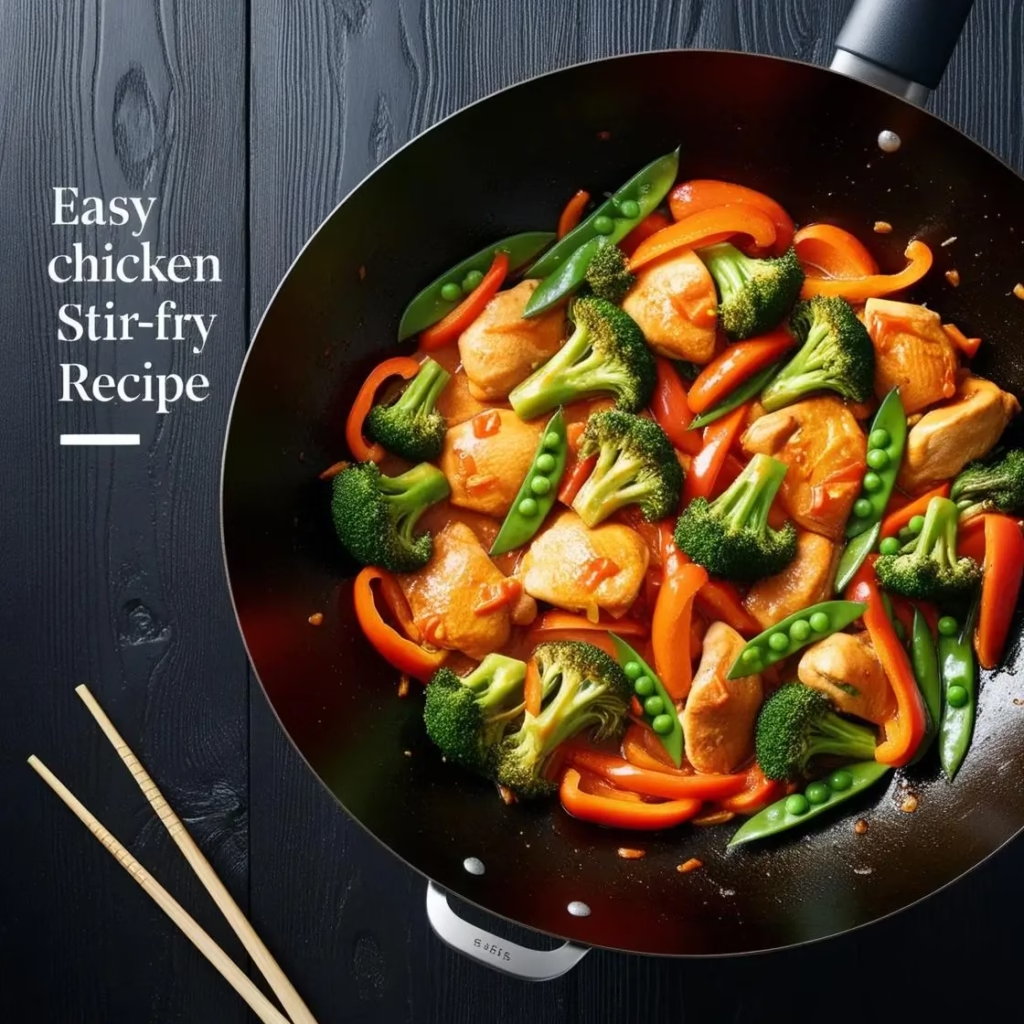
Low-Carb Chicken Soup
When you’re in the mood for a warm, comforting meal that’s both delicious and nutritious, low-carb chicken soup is a fantastic option. This soup combines the richness of a savory chicken broth with tender pieces of rotisserie chicken, fresh spinach, and cauliflower rice to create a satisfying dish that fits perfectly into a low-carb or keto lifestyle. It’s hearty, filling, and packed with flavor, making it a favorite for lunch or dinner any time of year.
Ingredients
- 1 lb (450g) boneless, skinless chicken breasts or thighs
- 1 tablespoon olive oil
- 2 cloves garlic, minced
- 1 small onion, diced
- 1 cup water
- 3 cups chicken broth (preferably low-sodium)
- 1 medium zucchini, diced
- 1 cup cauliflower florets (fresh or frozen)
- Fresh parsley (for garnish, optional)
- 1 cup spinach or kale (optional)
- ½ teaspoon salt (to taste)
- 1 teaspoon dried thyme
- 1 teaspoon dried oregano
- ¼ teaspoon black pepper
- 1 bay leaf
- 1 tablespoon lemon juice (optional, for added flavor)
Instructions
Cook the chicken:
Heat olive oil in a large pot or Dutch oven over medium heat. Add the chicken breasts or thighs and cook for 6-8 minutes per side, until the chicken is golden and cooked through. Remove from the pot and set aside to cool. Once cool, shred the chicken using two forks.
Sauté the vegetables:
In the same pot, add diced onion and garlic. Sauté for about 2-3 minutes, until the onion becomes soft and translucent.
Make the soup base:
Add the chicken broth and water to the pot with the onions and garlic. Stir in the zucchini, cauliflower, thyme, oregano, salt, pepper, and bay leaf. Bring the soup to a simmer and cook for about 10-12 minutes, or until the vegetables are tender.
Shred and add chicken:
While the soup simmers, shred the cooked chicken. Add the shredded chicken to the pot and stir to combine.
Add spinach/kale (optional):
If you’re using spinach or kale, stir it into the soup now and let it cook for an additional 2-3 minutes until wilted.
Finish and serve:
Stir in the lemon juice (optional), taste for seasoning, and adjust salt or pepper if needed. Remove the bay leaf before serving. Garnish with fresh parsley if desired.
Serving Suggestions
Enjoy this low-carb chicken soup on its own for a light and nourishing meal, or pair it with a crisp green salad for a little extra crunch. If you’re feeding a mixed crowd, offer a side of crusty bread for those who aren’t counting carbs.
With its rich flavors, nourishing ingredients, and simple preparation, this low-carb chicken soup is a comforting way to use up leftover rotisserie chicken while staying true to your health goals. It’s a meal you’ll keep coming back to, especially on chilly days when you need something cozy and satisfying! 🥣
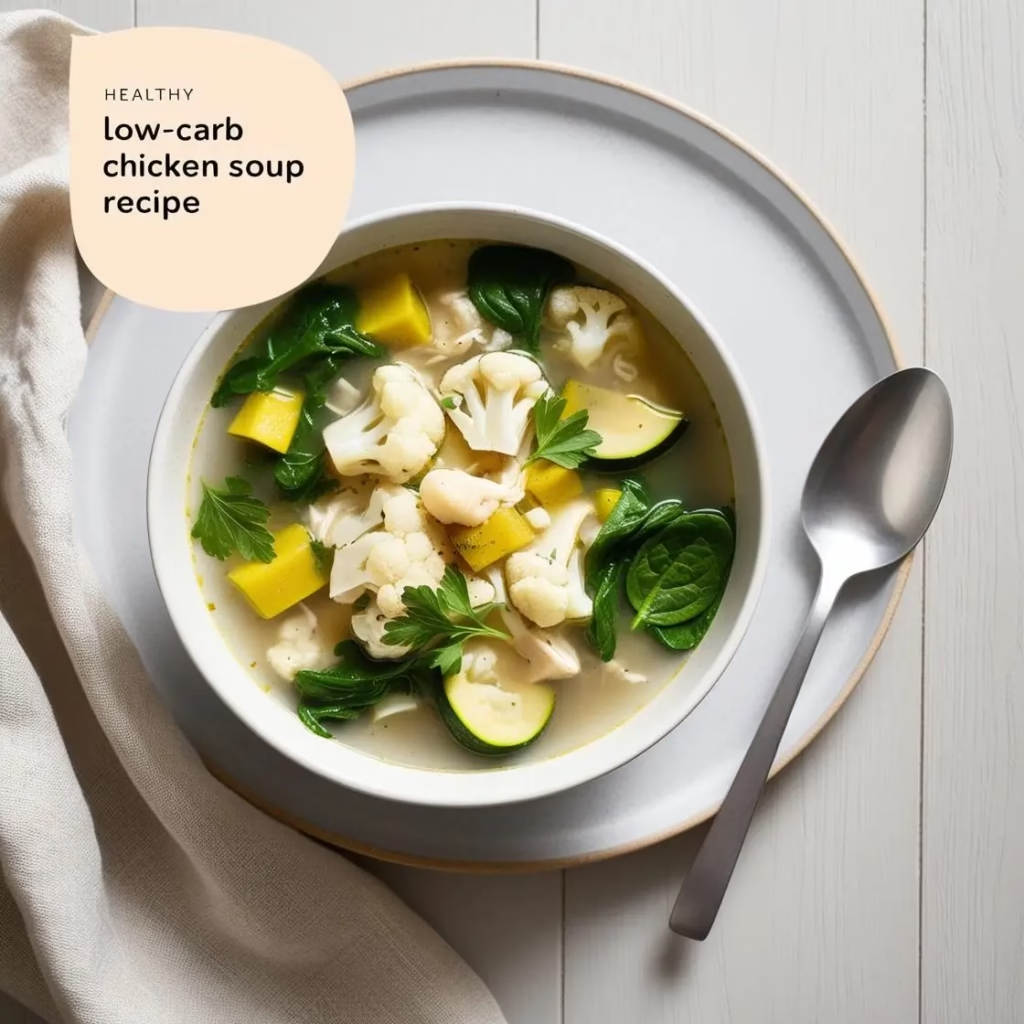
Chicken Salad
When you’re looking for a quick, healthy, and delicious low-carb lunch, chicken salad is the ultimate choice. It’s creamy, crunchy, and full of flavor, making it a go-to meal for busy weekdays or meal prep. By using leftover rotisserie chicken, you save time and effort while adding a depth of flavor that only perfectly roasted chicken can bring. Substituting Greek yogurt for mayonnaise keeps this dish light, tangy, and packed with protein, while fresh celery and a blend of spices add crunch and seasoning for a balanced bite every time.
Ingredients
- 4-6 cups mixed greens (optional, for serving)
- 2 cups cooked chicken (shredded or cubed; rotisserie chicken works great!)
- 1 tablespoon Dijon mustard
- 1 tablespoon lemon juice
- ½ cup mayonnaise (or Greek yogurt for a lighter version)
- 1 teaspoon honey (optional, for a touch of sweetness)
- 1 celery stalk, finely chopped
- ¼ cup red onion, finely chopped
- 1 apple, diced (optional, for sweetness and crunch)
- 1/3 cup grapes, halved (optional, for sweetness)
- Salt and pepper, to taste
- 2 tablespoons fresh parsley, chopped (optional)
Instructions
- Prepare the chicken:
If you haven’t already, cook your chicken and shred or cube it. You can use leftover chicken, grilled chicken, or rotisserie chicken for convenience. - Make the dressing:
In a medium bowl, whisk together the mayonnaise (or Greek yogurt), Dijon mustard, lemon juice, and honey (if using). Season with salt and pepper to taste. - Combine ingredients:
Add the chicken, celery, red onion, apple, and grapes (if using) into the bowl with the dressing. Stir to combine, making sure the chicken and vegetables are well-coated in the dressing. - Garnish:
Stir in fresh parsley for a burst of color and flavor, if desired. - Serve:
You can serve the chicken salad on its own or over a bed of mixed greens for a heartier meal. Optionally, add some nuts like almonds or walnuts for extra crunch.
How to Serve Chicken Salad
- Lettuce Wraps: Scoop the chicken salad into crisp lettuce leaves (like romaine or butter lettuce) for a refreshing and low-carb wrap.
- Stuffed Avocados: Hollow out an avocado and fill it with a generous portion of chicken salad for a creamy, indulgent presentation.
- Cucumber Boats: Slice cucumbers lengthwise, hollow out the centers, and fill with chicken salad for a crunchy, handheld snack.
- Salad Bowl: Serve the chicken salad over a bed of mixed greens for a light and satisfying lunch.
Tips for the Best Chicken Salad
- Texture Balance: Aim for a good mix of creamy, crunchy, and chewy elements for the perfect bite every time.
- Flavor Boost: Add a splash of lemon juice or apple cider vinegar to brighten up the flavors.
- Cold is Better: Let the salad chill before serving to allow the flavors to meld together beautifully.
- Use Quality Ingredients: With such simple ingredients, the quality of your chicken and yogurt makes a big difference in the final taste.
Chicken salad is a classic dish that never goes out of style. By using rotisserie chicken and Greek yogurt, you can whip up a fresh, satisfying meal in minutes that’s as delicious as it is nutritious. Whether you’re packing it for lunch or enjoying it as a light dinner, this dish proves that healthy eating can also be incredibly flavorful! 🥗
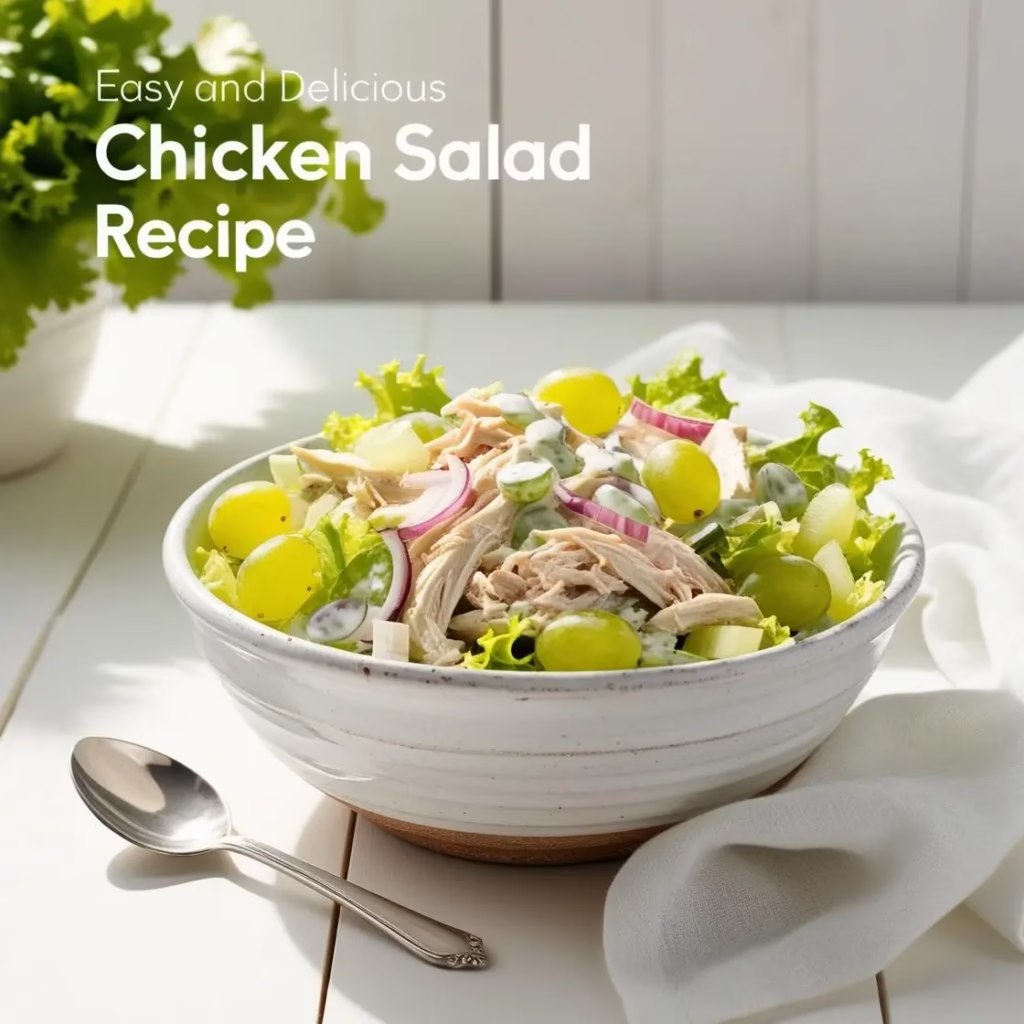
Nutrition Information
Chicken Tacos
- Calories: ~250–300 per taco
- Protein: ~20–25g
- Carbs: ~15–20g (depends on tortilla size/type)
- Fat: ~10–15g
Chicken Stir-Fry
- Calories: ~300–350 per serving (about 1 ½ cups)
- Protein: ~25–30g
- Carbs: ~15–18g (mostly from veggies)
- Fat: ~10–12g
Low-Carb Chicken Soup
- Calories: ~150–200 per cup
- Protein: ~20–25g
- Carbs: ~5–8g (low because it skips pasta/rice)
- Fat: ~5–7g
Chicken Salad
- Calories: ~350–400 per serving (about 1 cup)
- Protein: ~25–30g
- Carbs: ~5–10g (depending on add-ins like fruit)
- Fat: ~20–25g (mostly from mayo or dressing)
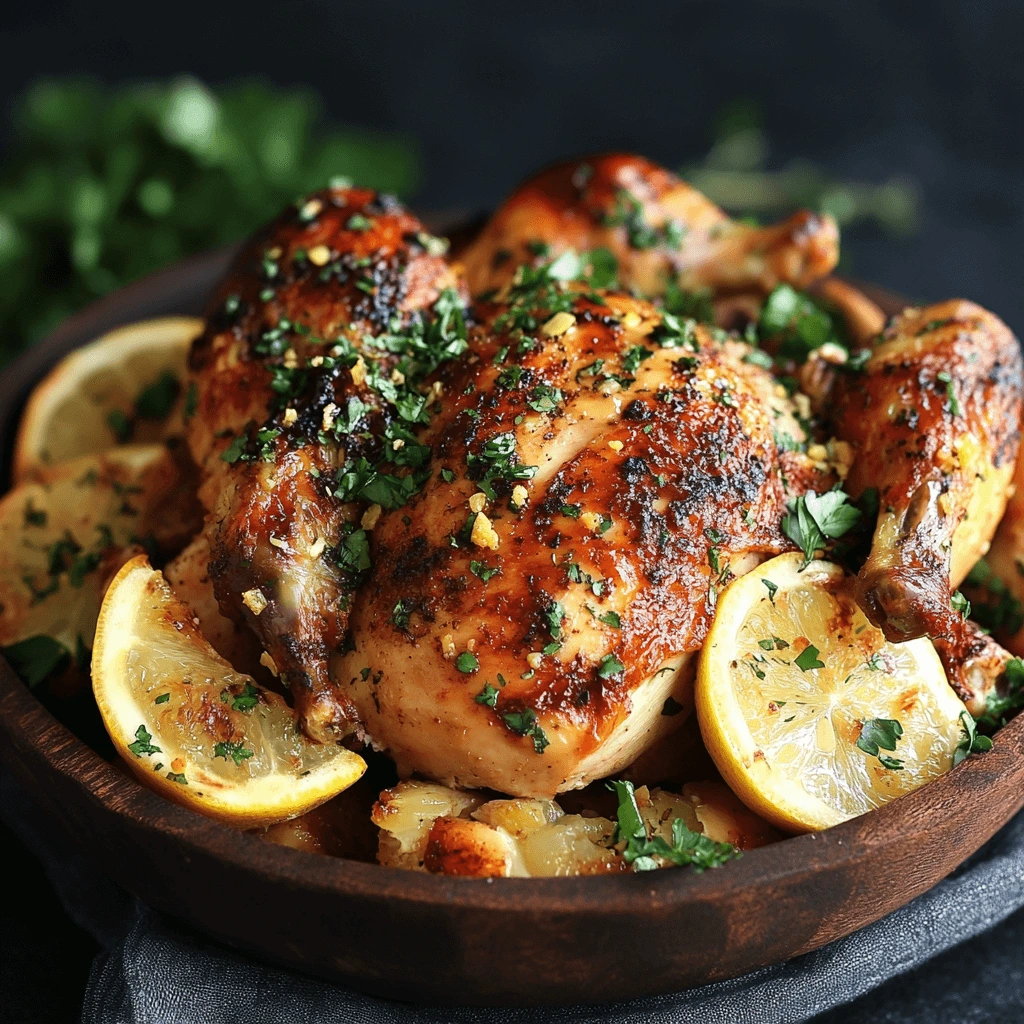
Frequently Asked Questions
1. How can I make leftover rotisserie chicken taste fresh again?
To freshen up the flavor, add a squeeze of lemon juice, fresh herbs (like parsley or cilantro), or a dash of seasoning. Mixing it with new ingredients, like vegetables, or cooking it in a new sauce (like BBQ, buffalo, or curry) can also revitalize its taste.
2. How long can leftover rotisserie chicken last in the fridge?
Leftover rotisserie chicken can last 3-4 days in the fridge. Make sure to store it in an airtight container to maintain freshness.
3. Can I freeze leftover rotisserie chicken?
Yes, you can freeze leftover rotisserie chicken for up to 2-3 months. To freeze, shred the chicken, place it in a freezer-safe container or zip-top bag, and store it in the freezer. When ready to use, thaw it in the fridge overnight.
nsuring that your meals are both satisfying and stunning! 🌟🍴
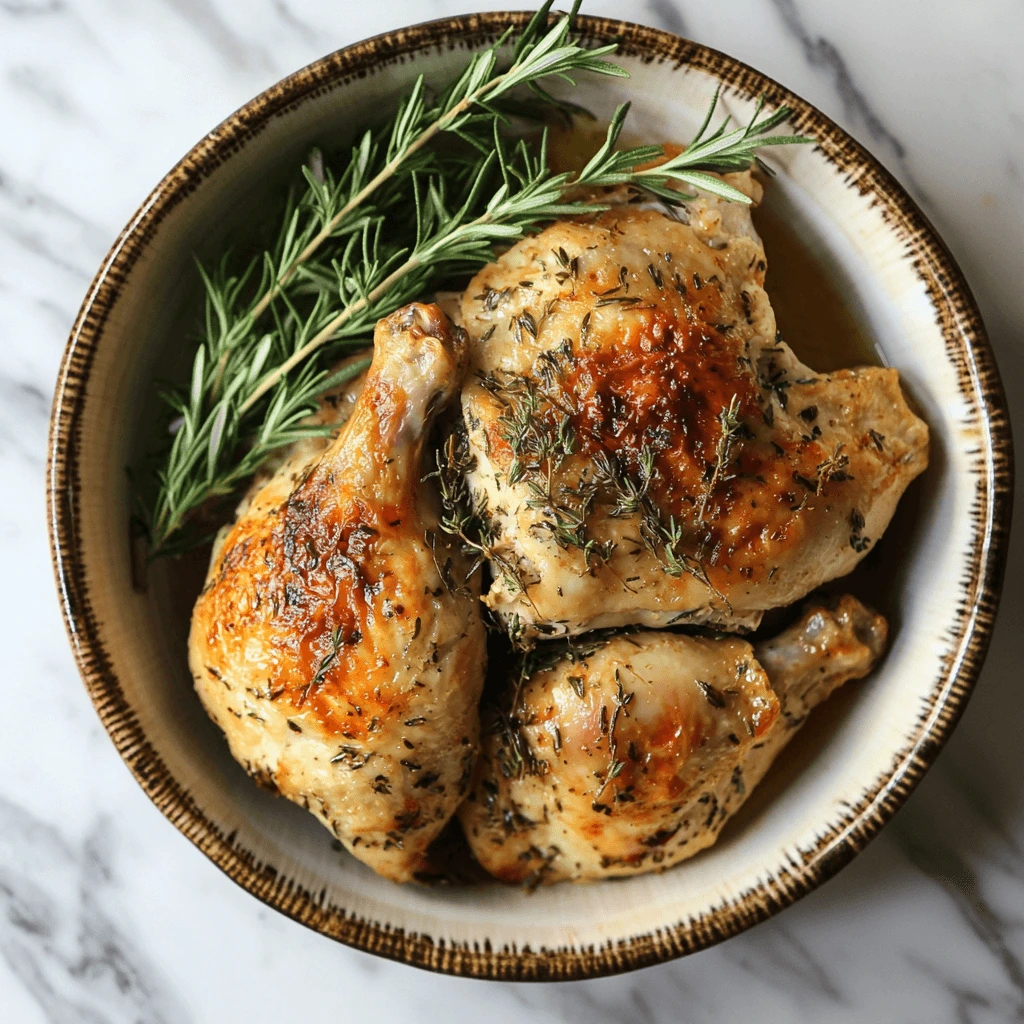
Other chicken recipes
- Baked Chicken Breast
- Cheesy Garlic Chicken Wraps
- Chicken Alfredo Lasagna
- Chicken & mushroom puff pie
Rotisserie chicken is truly a lifesaver in the kitchen, offering incredible versatility for creating a wide variety of delicious meals. From hearty soups and crisp salads to flavorful tacos and comforting casseroles, the recipes we’ve shared prove just how easy it is to turn leftovers into something extraordinary.
We encourage you to give these recipes a try and discover how effortlessly rotisserie chicken can elevate your meals. Have your own creative ideas or favorite combinations? Share them in the comments—we’d love to hear how you make the most of your leftovers!
For more easy and delicious meal ideas, don’t forget to explore our other recipes. Whether you’re looking for quick weeknight dinners or impressive dishes for special occasions, we’ve got you covered! Happy cooking!


janvier 3, 2025 at 7:37 pm[…] 1)Easy Leftover Rotisserie Chicken Recipes for Busy Nights […]
février 4, 2025 at 10:06 pmone of the bes recipe of leftover rotisserie chiken, Keep going
février 4, 2025 at 10:08 pmThank you for the comment
février 7, 2025 at 1:18 pm[…] Add protein: Stir in shredded rotisserie chicken […]
février 15, 2025 at 2:42 pm[…] by miracle you have leftover roast, store it for up to 4 days in the refrigerator in an airtight container. To reheat, opt for medium […]